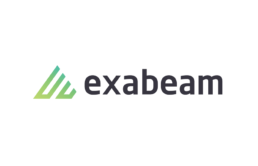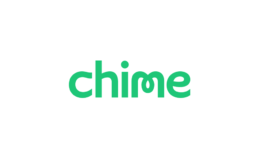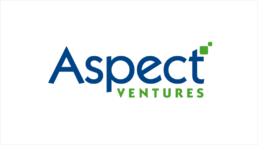Theresia Gouw named to 2018 Midas List
Aspect's Theresia Gouw has been named to the 2018 Forbes Midas List.
(Read on Forbes)
Seven-time Midas lister Theresia Gouw focuses on software and security technology at Aspect Ventures, the firm she cofounded in 2014 with Jennifer Fonstad. Prior to Aspect, Gouw was a general partner for 15 years at Accel. Her mission with Fonstad: bring collaboration back to Series A companies and bridge the gap between angel investors and larger multi-stage VC firms. In October 2017, Gouw scored an exit through the initial public offering of cybersecurity company ForeScout, which carries a market cap of more than $1 billion and is Gouw's fourth investment to reach the IPO milestone. (Gouw led ForeScout's Series A and has served on the board since.) She invested early in real estate search engine Trulia (IPO 2012) and more recently Cato Networks, which offers next-generation security services on demand, as well as Exabeam, a leader in user behavior analytics for cybersecurity. Gouw is also an investor in The Muse, a career advice website for millennials. A first-generation immigrant and engineer by training, Gouw is a passionate supporter of causes that support immigration and STEM education, including DonorsChoose.org. In 2016 she gave a TEDx talk about diversity and innovation, "How Entrepreneurs Can Help the American Dream Get Its Mojo Back." She's one of four Midas list partner members of All Raise, the women investor group profiled in Forbes' Midas cover story in April 2018.
How Melinda Gates Is Tackling Tech’s Gender Problem
Over the last few decades, Melinda Gates’ philanthropy has taken her to all corners of the globe. But recently she’s come to focus on an issue much closer to home: a dearth of women in tech. This week on Decrypted, Melinda Gates sits down with Bloomberg Technology’s Emily Chang to talk about her decision to back a venture capital firm run by two women, and what she hopes to achieve from that investment.
(Listen to the podcast on Decrypted)
Companies Are Seeing How Vulnerable They Are to Hacks
George Kurtz, Chris Roberts and Theresia Gouw talk about the state of security and what comes next
It’s obvious that cybersecurity continues to be one of the biggest priorities facing government and industry. The number of hacks is rising, as is their scale—with the threat of even greater thefts and disruptions seeming ever more likely. The character of the attackers is changing, too, as the line between state-sponsored hackers and independent criminals gets ever hazier.
To examine the topic, and how companies should deal with it, The Wall Street Journal’s editor in chief, Gerard Baker, spoke with Theresia Gouw, founding...
(Read the full story on WSJ)
Entrepreneurs Are The Key To Keeping California's Renewables Market Booming
When it comes to renewable energy, California is doing great. The state is ahead of schedule for meeting its goal of 50% of all power coming from renewable sources by 2030. Thanks to abundant sunshine and plenty of wind in places like the desert around Palm Springs, a full 68% of renewable energy is coming from solar and wind farms.
(Read on Forbes)
But is it possible to have too much of a good thing?
While California’s renewable energy boom is good for the environment, it’s not always financially efficient. That’s because on many days, California is actually producing more renewable energy than residents are using. On several occasions, utilities have had to pay surrounding states to take the excess energy off of their hands.
This is a tricky but not insurmountable problem. Entrepreneurs are well positioned to create products and technologies to help the state better manage its energy supply and demand. But to see the potential for this new industry, it’s important to understand why California has been forced to dump excess electricity in the first place.
Power grids work on a delicate balance of supply and demand. With fossil-fuel-powered plants, that’s not really an issue. When demand increases, these plants can easily power up to produce more electricity. When demand drops, they can temporarily slow generation.
But renewables work differently. When the sun is shining, solar panels convert it into power. When the wind blows, operators can’t just stop wind turbines from spinning. That can result in excess power flowing into the grid. And if supply outstrips demand, there’s a significant risk of blackouts as transmission lines get overwhelmed. Instead, utilities have to find ways to get rid of that excess electricity, too often by paying other states to take it.
This imbalance is a result of government and industry focusing more on generation than energy management. That’s why management is the next big market.
For example, a critical solution to the grid problem is batteries. Batteries in homes could store solar power to help people become energy self-sufficient. (Currently people with solar panels can draw energy from them only when the sun shines — unless they own a storage system like the Tesla Powerwall.) Batteries throughout the grid could store and release renewable energy to help keep the grid in balance.
Another way to manage energy use is through smart devices in the home. Power companies could alert people to use energy when demand is low and to curtail use when demand is high. The app OhmConnect already offers a service that pays people to reduce their energy use when demand is high (the company profits from utility companies that pay to avoid firing up additional power plants).
Expect to see more entrepreneurial innovation in this space — especially coming from San Diego, where the San Diego Regional Energy Innovation Network is working with startups on creative solutions to California’s energy problems.
Southern California Edison also has an interesting plan to help manage energy use through a combination of energy storage, more electric cars on the road and electrification of home space and water heaters. The idea is that by tackling the problem from a holistic point of view, every aspect of renewable power — from generation to use — could become more efficient and prevent future supply-and-demand imbalances. This kind of plan could open the door for many entrepreneurs.
In the first quarter of 2017, utilities had to curtail solar and wind production by 3% to compensate for supply-and-demand imbalances. With a little encouragement and some California ingenuity, entrepreneurs can help keep the state moving toward its goals while building new businesses.
Venture capitalists are investing an ‘unprecedented’ amount of money in tech — but there’s a catch
Aspect Ventures co-founder Jennifer Fonstad says the money is frequently not going to the entrepreneurs who need it most.
When Jennifer Fonstad became a venture capitalist, joining Draper Fisher Jurvetson in 1997, only 10 percent of the companies funded there had prior investors. And back then, she says, there was really just one angel investor: Ron Conway.
“Cycle forward 20 years and you have incubators, accelerators, seed funds, angel networks, micro-funds,” Fonstad said on the latest episode of Recode Decode, hosted by Kara Swisher. “The amount of capital available to get a company started is unprecedented.”
(Read and listen on Recode)
But just because there’s a lot of money floating around doesn’t mean that it’s spread evenly. Fonstad said most VC money is still directed at nascent companies, or successful ones that are scaling up; not enough is being pledged to help companies cross the “chasm” in which so many startups fail, which is one of the ills Aspect is hoping to address.
“That’s still an area where it’s an art, not a science, understanding the patterns of what’s likely to work and not, and how companies navigate that,” she said. “It’s still an area that is, I think, too high-risk for the growth folks. And the seed folks typically try to get all their ownership early on so they don’t want or need to take on that additional risk at that stage.”
On the new podcast, Fonstad also talked about how her job as a venture capitalist is changing now that startups can potentially get money from so many more places, including initial coin offerings. The simple-but-true reality is that VC firms have to provide more than just cash.
“We’re not ‘dumb money’ when you find talented people to help you build a business,” she said. “Entrepreneurs take incredible risks and put an incredible amount of their heart, soul energy and time into building a company, but it still takes a village to build successful companies.”
30 women in venture capital to watch in 2018
In 2017, the presence of women in venture capital made feeble progress at the country's top firms.
Union Square Ventures and First Round Capital were among two firms last year to take on their first female general partners.
And more and more women are founding female-led firms with an express interest in investing in female-founded startups, in order to break up tech's gender discrepancy.
We've rounded up a list of women across the US who are sourcing noteworthy deals, founding female-led firms, cultivating interest in female-founded startups, and making strides in venture capital.
(See list on Business Insider)
Tel Aviv Startup Nibbles On AT&T And Verizon In $8B Market
Shlomo Kramer is unusually good at picking startup winners. His Cato Networks is a secure cloud network security service that's growing fast — and that could cost incumbents like AT&T and Verizon some revenue.
(Read on Forbes)
Kramer has a great track record of startup investing success. He hauled in $740 million from the proceeds of two companies. Globes estimated that his August 2013 sale of Trusteer, an information security service provider, to IBM for "close to $1 billion" yielded Kramer $240 million. Moreover, it estimates that Kramer realized $500 million from selling his stake in Check Point Software, which had a $16.8 billion market capitalization on February 2.
He has made other successful bets in startups that now trade on NASDAQ. In March 2015, Kramer owned a 13.7% stake in Imperva ($1.5 billion market capitalization) and in August 2013 owned 1.5% of Palo Alto Networks ($13.3 billion market capitalization), which would now be valued at $206 million and $200 million, respectively.
But Kramer is not stopping there. In October 2015, he announced Cato's $20 million financing from U.S. Venture Partners and Aspect Ventures.
Kramer is CEO and co-founder with Gur Shatz, who had bootstrapped the company until 2015. Shatz brings "an extensive background in Cloud-based web applications security and acceleration. Previously, he was the co-founder and CEO of Incapsula, which Imperva acquired in 2014, according to my October 2015 interview with Kramer.
On January 31, Cato announced that it's growing fast — bookings were up 100% "quarter over quarter," according to a company statement. And Cato's growth could come out of the hide of companies like AT&T and Verizon, Kramer explained in a January 29 interview.
That's because business data traffic has changed and those telecom giants have not adapted their products to the change. "[AT&T and Verizon offer Multi-protocol Label Switching] MPLS which used to be great when the most common traffic pattern was between a remote office and headquarters," said Kramer.
But today's traffic is very different. "[An executive might] use his smartphone in a hotel room in Tokyo to access Workday with customer data coming from AWS. The Wide Area Network (WAN) has to be reevaluated over the next five to 10 years to accommodate these changes," he explained.
Cato believes that its so-called Software Defined (SD-WAN) is a much better solution for customers' current traffic patterns than the ones offered by AT&T and Verizon. "Cato Cloud securely connects all enterprise locations, people, and physical and cloud datacenters into a global, encrypted and optimized SD-WAN in the cloud. And it offers a migration path from the old to the new."
SD-WAN is a large market that's growing quickly. According to IDC, worldwide SD-WAN infrastructure and services revenue will grow at a nearly 70% compound annual rate to reach $8.05 billion in 2021.
The reason for this growth is that SD-WAN is flexible and based in software in the cloud; whereas incumbents offer "a rigid, widget-based solution. We are [borrowing from T-Mobile] the un-carrier," argues Kramer.
Cato, which Kramer plans to build into a big company, says it's the market leader in SD-WAN. According to a statement, "Cato Cloud has a larger network footprint than any other global, cloud-based SD-WAN with 39 points-of-presence (PoPs) around the globe, including two locations in China, Beijing and Shanghai, and twice the number of PoPs in North America as its closest competitor."
But will AT&T or Verizon buy the company to get its technology? After all, 2017 featured two acquisitions of SD-WAN companies. To wit, VMware purchased SD-WAN vendor VeloCloud in November 2017 for an undisclosed amount and Cisco purchased Viptela for $610 million in August 2017, according to SDX Central.
Cato says it has "hundreds of customers with thousands of branch locations across all verticals. Among these is Pet LoversCentre Pte Ltd, an Asian pet products and services retailer which runs "more than 100 sites on Cato Cloud," according to Cato. David Whye Tye Ng, CEO & Executive Director at Pet Lovers says, "I would recommend Cato to a friend, and that's a big deal for me to say."
AT&T argues that its service is great for customers. According to the company, "Virtual Private Networks (VPN) based on MPLS are an excellent option for connecting to cloud-based services because of their private network characteristics, improved levels of connectivity, availability of infrastructure redundancy, capabilities for prioritizing traffic."
Cato believes that AT&T and Verizon have been slow to deliver their own SD-WAN service. "They have been trying to do what they know, which is to orchestrate big integration projects. But when it comes to offering a carrier cloud, the polite way to describe what they're doing is 'it's perpetually arriving soon,'" said Kramer
Randall Stephenson, CEO and chairman of AT&T, told investors during its first-quarter 2017 conference call that it needs an SD-WAN product in its portfolio. According to Stephenson, “You should assume we’re developing [an SD-WAN] capability ourselves because we think it’s a viable offer down market [for small and medium-sized businesses]. We’re seeing some effect from it and while it’s not material yet, we need to have it.”
Indeed, Fierce Telecom reported that in 2016 AT&T was collaborating with VeloCloud, which VMWare acquired (see above). But that has not stopped AT&T, which SDX Central reported last month is the basis of its SD-WAN offering.
SD-WAN seems to offer businesses a more flexible solution that better meets their needs and requires much less overhead.
This leaves two questions: Will large companies also adopt SD-WAN? Will Cato or AT&T and Verizon dominate that market?
Exabeam Closes 2017 with Record Growth, Sales up over 250% with Worldwide Deployment Topping 200 Customers
SAN MATEO, Calif., Jan. 30, 2018 (GLOBE NEWSWIRE) -- Exabeam, the leader in security intelligence solutions, concluded a record year in 2017, in both revenue and active enterprise customers. This growth far exceeded the annual growth rate of the SIEM market, which is projected to reach $3.4B by 2021.
(Read on Business Insider)
Billings for the year grew 250 percent compared to 2016. The number of enterprise customers using Exabeam’s technology to power their security programs also increased to over 200. Additional highlights include:
--Closed more business in the fourth quarter of 2017 than in all of 2016
--A fivefold increase in transactions over $1 million
--Seven channel partners sold over $1 million in Exabeam products, and one partner topped $10 million in sales
Powering this growth was Exabeam’s transition from providing a UEBA solution to a full SIEM platform, and high marks from industry analysts. The company debuted in the 2017 Gartner SIEM Magic Quadrant as a Visionary. Exabeam also received accolades from a number of publications, including the Computing Security Excellence Award for Security Event Management, SC Media 2017 Excellence Award Winner for Best Emerging Technology, CRN 2017 Emerging Vendor, Cyber Defence Magazine 2017 Cyber Security Leader, among others.
“In 2017, Exabeam announced our entry into the SIEM market, with the goal of doing to SIEM what Palo Alto Networks did to firewalls -- launching an initial tool to grow and learn in the market,” said Nir Polak, CEO of Exabeam, “That strategy led to an amazing year, and I fully expect 2018 to be even better.”
“Exabeam’s growth rate is at the very high-end for enterprise companies that we work with at Lightspeed. We’ve also tracked Exabeam’s growth against a number of public security companies and the top-line acceleration is well ahead of most other companies when they were at this stage” said Lightspeed Partner Ravi Mhatre, “Exabeam has moved extremely quickly to establish its leadership position in the market and holds all of the promise of becoming a standalone public company.”
In 2018, Exabeam’s crosshairs will remain pointed at legacy vendors in the SIEM space. The company plans to focus on tightening integrations within its platform, enhancing user experience, and an increasing emphasis on the cloud. Exabeam will also host its first user conference, Spotlight, in September at the Cosmopolitan in Las Vegas.
About Exabeam
Exabeam provides security intelligence and management solutions to help organizations of any size protect their most valuable information. The Exabeam Security Intelligence Platform uniquely combines a data lake for unlimited data collection at a predictable price, machine learning for advanced analytics, and automated incident response into an integrated set of products. The result is the first modern security intelligence solution that delivers where legacy SIEM vendors have failed. Built by seasoned security and enterprise IT veterans from Imperva, ArcSight, and Sumo Logic, Exabeam is headquartered in San Mateo, California. Exabeam is privately funded by Norwest Venture Partners, Aspect Ventures, Icon Ventures, Lightspeed Venture Partners, and investor Shlomo Kramer. Follow us on Facebook, Twitter, and LinkedIn.
Chime Leading the U.S. Challenger Banking Category, Reaches 750,000 Bank Accounts, $2.5B Transaction Volume and Helps Members Save $72M in 2017
SAN FRANCISCO, Jan. 31, 2018 /PRNewswire/ --Chime, the leader in U.S. challenger banking, is on track to open more than 100,000 bank accounts per month and expects to reach 1 million total this quarter. With more than 750,000 bank accounts opened to date and over $2.5 billion in total transaction volume, Chime has emerged as the clear leader in the challenger banking segment.
(Read on Business Insider)
Consumers are rapidly switching from traditional banks to Chime - "the bank account that has your back" - for a more simplified, connected approach to banking that helps members avoid fees, save money automatically, and stay on top of their finances. While most Americans pay more than $27 a month on average in bank fees, Chime doesn't charge overdraft fees, monthly fees or foreign transaction fees. With its award-winning mobile banking app, Chime members avoided more than $225 million in potential overdraft fees from traditional banks in 2017 alone, while putting over $72 million into savings accounts with help from Chime's automated savings tools.
"Traditional banks are failing to meet the changing needs and expectations of millions of Americans," added Chris Britt, CEO and Founder of Chime. "There's too much friction in consumer banking, and the days of big banks profiting from customer misfortune are ending. Your bank shouldn't be your adversary. We make banking easier and help our members achieve long-term financial health."
To mark the end of a successful year, the company released a Key Milestones and Trends Report with insights based on Chime member behavior. Key trends observed among its large base of millennial members include: early investments in cryptocurrencies and increasing usage of financial automation. For more 2018 trends, see https://www.chimebank.com/2018Trends
About Chime
Chime, the leader in the U.S. challenger banking segment, helps members avoid bank fees, save money automatically, and lead healthier financial lives. Founded by financial and tech industry veterans Chris Britt and Ryan King, Chime offers a modern, mobile and connected approach to banking that gives members complete control of their finances. Chime members receive a Chime debit card, a Spending Account, a Savings Account, and a powerful mobile app that keeps members in control. The Chime mobile app is available for iPhone and Android devices and has been featured as one of the best Money Management apps in the App Store. Chime's global network of investors includes Aspect Ventures, Cathay Innovation, Crosslink Capital, Forerunner Ventures, Homebrew, Northwestern Mutual Future Ventures, Omidyar Network and PivotNorth Capital. Banking Services provided by The Bancorp Bank, Member FDIC. To learn more about Chime visit http://www.chime.com.
Aspect Ventures New Fund Announcement
ASPECT VENTURES CLOSES $181MM SECOND FUND
Firm embarks on continued growth, closing above top end of target range
PALO ALTO, CA (January 23, 2018) – Aspect Ventures, an early stage venture capital firm in Silicon Valley, has closed its second institutional venture fund of $181 million, above the top end of its target range. The firm will use the funds to continue to invest in early stage technology companies.
Aspect was founded in 2014 by industry veterans Jennifer Fonstad and Theresia Gouw and raised its first institutional fund of $150 million in 2015. The firm boasts an impressive roster of over 25 portfolio companies. Fund I investments include cybersecurity providers Forescout Technologies, Cato Networks, and Exabeam, future of work-focused companies Crew, Gusto, Chime, and The Muse, and digital health startups such as Vida Health, Grokker, and Solv. Artificial intelligence serves as the foundational technological platform for several of Aspect’s portfolio companies targeting key verticals, including companies like Amino (digital health), Astro & Troops (future of work), and Mapper (autonomous vehicle software).
The second fund comes on the heels of Aspect Ventures’ first portfolio company IPO this past fall. Cybersecurity provider Forescout Technologies (FSCT), a leading IoT security company, went public at the top end of its range and is currently valued over $1 billion; a rarity for a young firm like Aspect Ventures.
Fonstad and Gouw have regularly led as Midas List winners, with past notable investment successes in Athena Health (ATHN), Nanostring (NSTG), Flurry (acquired by YHOO), Trulia (TRLA, acquired by Z), Imperva (IMPV), and LearnVest (acquired by Northwestern Mutual) to name a few examples.
Melinda Gates has been very public about her investment in Aspect as a Fund II institutional investor. “Jennifer and Theresia are extremely talented investors. They see opportunities where others don’t – including backing diverse entrepreneurs whose potential the venture capital industry has long been blind to,” said Gates.
Kevin Irwin, President & CIO of Knollwood Investments, stated, “Based on their prior investment track records and successful investments such as Imperva and Athena Health, I sought out Aspect even before they raised their Fund I. I was pleased to be an investor in Fund I, and it is terrific that just a few years in an Aspect portfolio company in the cybersecurity arena has already done a successful IPO. I very much look forward to continuing our partnership throughout Fund II.”
Janey Hoe, VP of Corporate Development of Cisco, another institutional investor in Aspect’s Fund II stated, “Aspect is a great investment for us, and we also love what the team represents: “diversity begets diversity.” Aspect’s diverse investing team and collaborative nature differentiates the firm from others in terms of its portfolio and its approach to working with entrepreneurs and investors alike. Aspect Venture’s shared focus on early stage cybersecurity innovations has been an added source of value to us.”
Co-founder Jennifer Fonstad stated, “Theresia and I founded Aspect because we saw an opportunity to bridge the gap between seed and later stage investments. We are incredibly proud of the portfolio of investments our team has built in Fund I, and we look forward to continuing our work in Fund II.”
“Aspect is our own start-up. I’m incredibly proud of the team we are building at Aspect, and how we approach collaboration and teamwork both with our founding teams and with our venture capital co-investors,” said co-founder Theresia Gouw.
As a firm, Aspect recently announced additions to its investing team, including Kendra Ragatz as General Partner & COO, cybersecurity veteran Mark Kraynak, and former enterprise software executive Chad Herrin. Aspect’s Lauren Kolodny was also recently promoted to Partner of the firm.
About Aspect Ventures
Aspect Ventures, a leading venture capital firm in Silicon Valley, was founded in 2014 by two Silicon Valley industry veterans. Aspect raised its first institutional fund of $150 million in 2015 and a second investment fund of $181 million in 2017. Aspect invests across a broad array of industries including cybersecurity, future of work, digital health, and several other emerging technology areas. Current portfolio companies include cybersecurity providers Forescout Technologies, Cato Networks, and Exabeam; future of work-focused companies Crew, Gusto, Chime, and The Muse; and digital health startups such as Vida Health, Grokker, and Solv. Artificial intelligence serves as the foundational technological platform for several of Aspect’s investments targeting key verticals, including companies like Amino (digital health), Astro & Troops (future of work), and Mapper (autonomous vehicle software). Taken together, the track record of the firm’s investment team includes 11 IPOs, 29 successful acquisitions, multiple billions in public market cap, and over 500 rounds in follow-on capital raised for portfolio companies.











